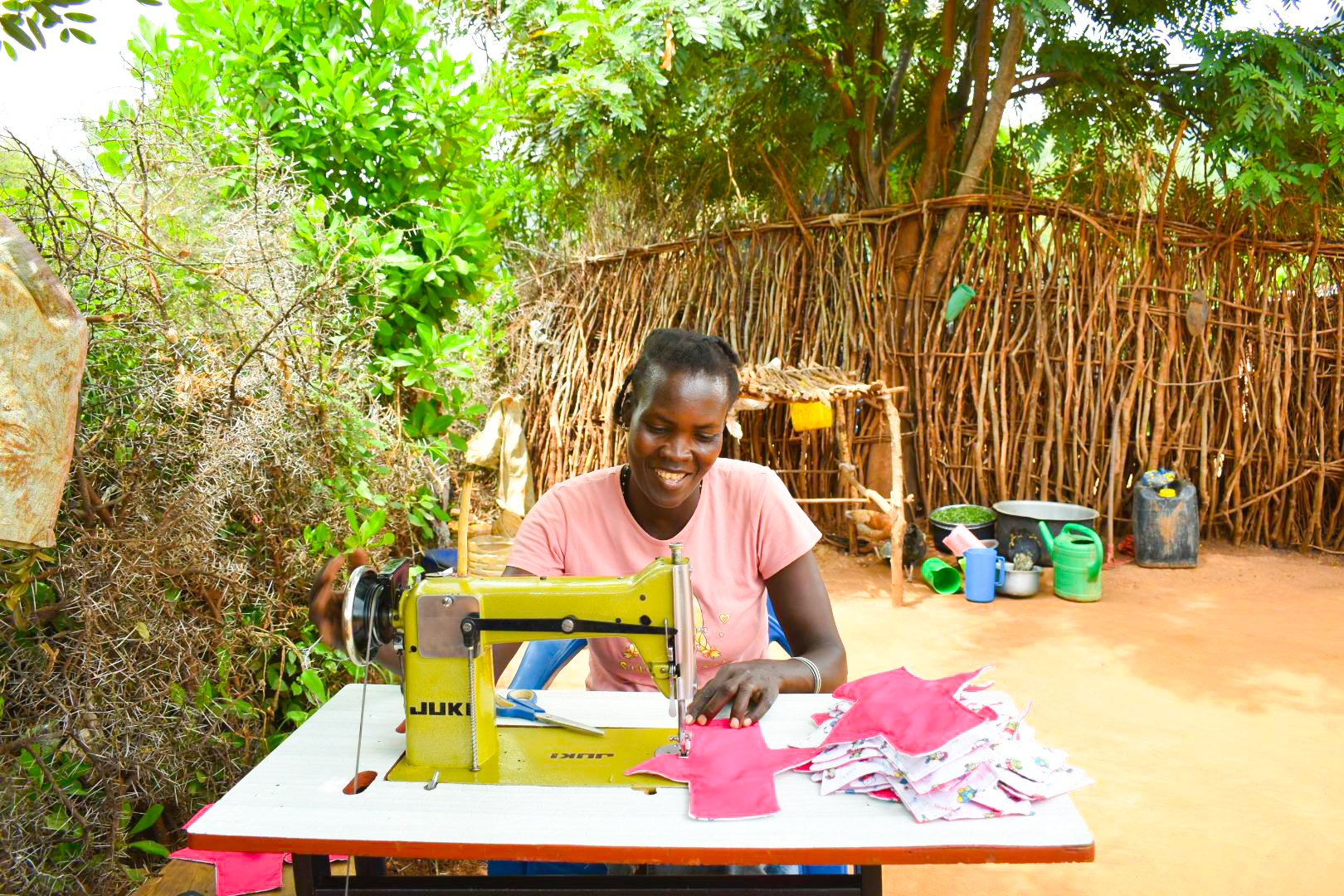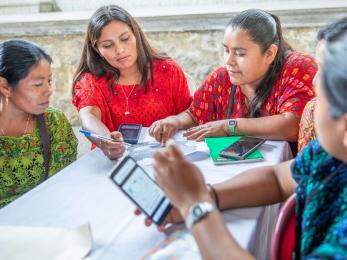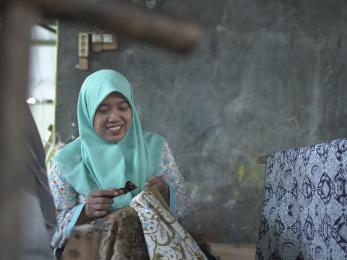The facts: Central American migration
![Olga, 16, dropped out of school to help support her family in Guatemala. After participating in a Mercy Corps program, she says she has a new sense of purpose and wants to finish school to become a clothing designer. "[Young people] think that in the United States they will have a better future, but it's not true,” she says. “We don't know what our abilities are. We just need a little bit of a push." Photo: Corinna Robbins/Mercy Corps](/sites/default/files/styles/mercycorps_default_small_1x/public/2020-02/guatemala-201703-crobbins-0534.jpg?h=403fc531&itok=0JMZv2T6)
In November 2018, thousands of migrants arrived at the U.S. border. It was the end of a 3,000-mile journey, but only the start of questions to come: Where would these families end up? Why were so many arriving at once? And how should the United States respond?
Migration is a harrowing decision that uproots entire lives. In the face of limited employment prospects, extortion, sexual violence, domestic abuse, gangs, and even death, it is often the last choice people have.
As the current administration has announced plans to cut aid to Central America and tighten restrictions for asylum seekers, questions about the value of U.S. assistance in this region have never been more urgent. Read on to learn more about what’s driving this migration crisis and join us to support the preservation of vital U.S. aid to Central America.
- Why are people fleeing Central America?
- Who is fleeing Central America?
- What is the Northern Triangle?
- Has illegal immigration to the U.S. increased?
- Is there a Central American caravan?
- Where is U.S. funding for Central America going?
- Does aid to Central America work?
- How is Mercy Corps helping?
- How can I help?
Why are people fleeing Central America?
As we found in our new research, violence and poverty are two leading causes of migration from Central America. People are fleeing their homes out of desperation.
After the region was rocked by civil wars in the 1980s, organized crime flourished and high rates of unemployment spread. For millions of children and families in Central America, daily life is a recurring cycle of poverty, crime, corruption, domestic violence and abuse. Violence and economic instability feed off each other — insecurity stifles economic growth, while poverty and lack of opportunities create rife conditions for the emergence of gangs and other violent groups.
Every ten homicides in the region between 2011 and 2016 led to six children migrating to the U.S.
Additionally, climate change is driving many young people to migrate from rural areas like Guatemala’s highlands. Increasingly extreme and variable climate conditions are reducing agricultural productivity, leading some to sell their land in an effort to finance migration to the U.S. It is estimated that climate change could lead to at least 1.4 million people fleeing their homes from Central America in the next three decades.
In most cases, fleeing home is a last resort, especially for women and children — there’s no other way to guarantee safety. It’s seen as the only option to build a better life.
Who is fleeing Central America?

The profile of Central American migrants is shifting increasingly to more at-risk and vulnerable groups. Reporters on the ground say the migrants comprise mainly women and children who are fleeing from violence and extreme poverty.
Since 2011, the amount of unaccompanied children migrating to the U.S. border has risen alarmingly as street gangs target youth for recruitment. In 2014, three out of every four unaccompanied minors apprehended at the U.S.-Mexico border were from the Northern Triangle.
According to recent interviews we conducted, a recent trend is that more women are traveling with young children because they believe it increases their chances of being allowed into the U.S. This is reflected in numbers from U.S. Border Patrol, which show a decrease in apprehensions of single adults and a dramatic increase in family units.
What is the Northern Triangle?

The Northern Triangle includes the Central American countries of Guatemala, Honduras and El Salvador. The area is one of the most dangerous in the world, due in large part to gang violence. Homicide rates in the Northern Triangle are comparable with a war zone.
Migration from the Northern Triangle is not new — it began in the 1960s and surged in the 1980s. Between 1980 and 2013, the size of the Central American immigrant population in the U.S. grew from 354,000 to more than 3 million.
Has illegal immigration to the U.S. increased?
Starting in the mid-1980s, the U.S. apprehended an average of around 1 million people per year at the southern border. By 2018, that number had dropped to 467,000, though it is rising again. One reason for the overall decline is the nationality of those migrating: As immigration from Mexico has decreased, it has steadily increased from the Northern Triangle.
Research shows that surges in border enforcement have had little effect in reducing unauthorized migration to the U.S. Despite a 20-fold increase in funding for border security, the undocumented immigrant population in the U.S. quadrupled between 1986 and 2008. We can’t solve this problem unless we address the root causes that drive people to leave.
Is there a migrant caravan?
The journey from the Northern Triangle to the U.S. is comparable to walking from New York to Los Angeles. Many migrants never make it — as many as 20,000 are kidnapped every year. Traveling in caravans is popular because there is safety in numbers.
In November 2018, more than 5,000 migrants reached Tijuana after traveling 3,000 miles. Most of them were from Honduras and said they wanted to seek asylum in the U.S. due to persecution. Seeking asylum is protected under U.S. and international law — migrants who request asylum are not considered illegal immigrants, and seeking asylum at a port of entry is not a crime.
One reason these caravans are gathering near the border is because authorities at border crossings have limited the number of people who can request asylum. According to NPR, only 40 to 100 people in Tijuana were allowed to apply each day. Asylum is a long process, and people have no choice while they wait to hear their status.
Choosing asylum is a harrowing decision that uproots people’s entire lives. The only way to curb Central American migration is to address the risks and dangers that force people to choose it. That means investing in good governance, economic prosperity and improved security in Central America.

Where is U.S. funding for Central America going?
The United States invests hundreds of millions of dollars each year in programs that promote democracy, prosperity and security in the Northern Triangle. According to the U.S. Global Leadership Coalition, U.S. assistance to Central America has decreased by nearly 20% since 2016, and assistance to the Northern Triangle is just 0.035% of the current federal budget.
A common myth in the Central American aid debate is that U.S. funding for Central America only goes to governments. On the contrary, funding from the United States goes primarily to organizations like Mercy Corps working directly with communities.
The people who will suffer most from proposed aid cuts are some of the people most invested in improving their home communities: families living in vulnerable situations and local leaders working to build sustainable change.

Does aid to Central America work?
Although limited data makes it difficult to establish a direct link between U.S. foreign assistance and migration, the evidence that we do have suggests that U.S. assistance programs in Central America are indeed improving people’s lives and providing them with a path to economic security and a brighter future.
Our research has found that youth who participated in our violence prevention program had less desire to leave Guatemala than those who did not participate. Our youth agriculture program, meanwhile, showed a 30 percent decline in participants thinking often about migrating.
These programs give young people reasons to stay. They create new opportunities and connections. They increase young people’s confidence.

How is Mercy Corps helping?
Currently, Mercy Corps has two programs in Guatemala that receive U.S. government funding. The first is an urban violence prevention program that works in the six municipalities with the highest rates of violence in Guatemala.
We’re working with youth and other community leaders to develop violence prevention plans, which include projects like street light installation and improvement of public spaces like parks and community centers. We’re also helping to create student governments and pioneering education initiatives that promote crime and violence prevention in 38 schools, reaching over 17,000 youth, teachers and parents.

Our other United States government-funded program is a rural development program in Guatemala's Western Highlands. We are working with 200 communities to improve economic growth, social development and political participation for women, youth and indigenous communities in some of Guatemala’s most marginalized communities; we’ve helped them develop 66 water and sanitation projects and establish 22 community savings and loans groups.
We also recently completed a two-year agricultural development program in Guatemala’s Western Highlands. Through the course of the program, we worked with 1,000 young people (15-24 years old) to create savings and loans groups where they could finance investments in agricultural projects, such as purchasing new tools or agricultural inputs. Savings at the end of the program topped $110,000, helping these young people improve their economic opportunities and establish careers in agriculture.
How can I help?
Foreign assistance is a bipartisan issue, championed by both Republicans and Democrats who recognize that slashing U.S. aid to El Salvador, Guatemala and Honduras would undermine the goal of creating a safer and more prosperous Central America. We need to continue investments to build safer, more prosperous communities in Central America so that each person has the chance to build a better life in their own community. You can help.


